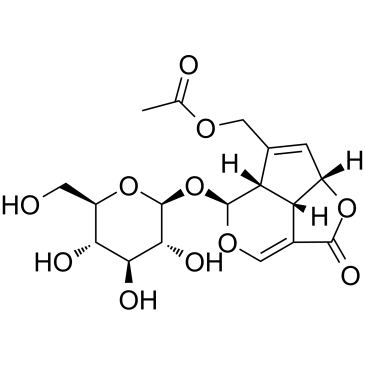Immunology/Inflammation
The immune and inflammation-related pathway including the Toll-like receptors pathway, the B cell receptor signaling pathway, the T cell receptor signaling pathway, etc.
Toll-like receptors (TLRs) play a central role in host cell recognition and responses to microbial pathogens. TLR4 initially recruits TIRAP and MyD88. MyD88 then recruits IRAKs, TRAF6, and the TAK1 complex, leading to early-stage activation of NF-κB and MAP kinases [1]. TLR4 is endocytosed and delivered to intracellular vesicles and forms a complex with TRAM and TRIF, which then recruits TRAF3 and the protein kinases TBK1 and IKKi. TBK1 and IKKi catalyze the phosphorylation of IRF3, leading to the expression of type I IFN [2].
BCR signaling is initiated through ligation of mIg under conditions that induce phosphorylation of the ITAMs in CD79, leading to the activation of Syk. Once Syk is activated, the BCR signal is transmitted via a series of proteins associated with the adaptor protein B-cell linker (Blnk, SLP-65). Blnk binds CD79a via non-ITAM tyrosines and is phosphorylated by Syk. Phospho-Blnk acts as a scaffold for the assembly of the other components, including Bruton’s tyrosine kinase (Btk), Vav 1, and phospholipase C-gamma 2 (PLCγ2) [3]. Following the assembly of the BCR-signalosome, GRB2 binds and activates the Ras-guanine exchange factor SOS, which in turn activates the small GTPase RAS. The original RAS signal is transmitted and amplified through the mitogen-activated protein kinase (MAPK) pathway, which including the serine/threonine-specific protein kinase RAF followed by MEK and extracellular signal related kinases ERK 1 and 2 [4]. After stimulation of BCR, CD19 is phosphorylated by Lyn. Phosphorylated CD19 activates PI3K by binding to the p85 subunit of PI3K and produce phosphatidylinositol-3,4,5-trisphosphate (PIP3) from PIP2, and PIP3 transmits signals downstream [5].
Central process of T cells responding to specific antigens is the binding of the T-cell receptor (TCR) to specific peptides bound to the major histocompatibility complex which expressed on antigen-presenting cells (APCs). Once TCR connected with its ligand, the ζ-chain–associated protein kinase 70 molecules (Zap-70) are recruited to the TCR-CD3 site and activated, resulting in an initiation of several signaling cascades. Once stimulation, Zap-70 forms complexes with several molecules including SLP-76; and a sequential protein kinase cascade is initiated, consisting of MAP kinase kinase kinase (MAP3K), MAP kinase kinase (MAPKK), and MAP kinase (MAPK) [6]. Two MAPK kinases, MKK4 and MKK7, have been reported to be the primary activators of JNK. MKK3, MKK4, and MKK6 are activators of P38 MAP kinase [7]. MAP kinase pathways are major pathways induced by TCR stimulation, and they play a key role in T-cell responses.
Phosphoinositide 3-kinase (PI3K) binds to the cytosolic domain of CD28, leading to conversion of PIP2 to PIP3, activation of PKB (Akt) and phosphoinositide-dependent kinase 1 (PDK1), and subsequent signaling transduction [8].
References
[1] Kawai T, Akira S. The role of pattern-recognition receptors in innate immunity: update on Toll-like receptors[J]. Nature immunology, 2010, 11(5): 373-384.
[2] Kawai T, Akira S. Toll-like receptors and their crosstalk with other innate receptors in infection and immunity[J]. Immunity, 2011, 34(5): 637-650.
[3] Packard T A, Cambier J C. B lymphocyte antigen receptor signaling: initiation, amplification, and regulation[J]. F1000Prime Rep, 2013, 5(40.10): 12703.
[4] Zhong Y, Byrd J C, Dubovsky J A. The B-cell receptor pathway: a critical component of healthy and malignant immune biology[C]//Seminars in hematology. WB Saunders, 2014, 51(3): 206-218.
[5] Baba Y, Matsumoto M, Kurosaki T. Calcium signaling in B cells: regulation of cytosolic Ca 2+ increase and its sensor molecules, STIM1 and STIM2[J]. Molecular immunology, 2014, 62(2): 339-343.
[6] Adachi K, Davis M M. T-cell receptor ligation induces distinct signaling pathways in naive vs. antigen-experienced T cells[J]. Proceedings of the National Academy of Sciences, 2011, 108(4): 1549-1554.
[7] Rincón M, Flavell R A, Davis R A. The Jnk and P38 MAP kinase signaling pathways in T cell–mediated immune responses[J]. Free Radical Biology and Medicine, 2000, 28(9): 1328-1337.
[8] Bashour K T, Gondarenko A, Chen H, et al. CD28 and CD3 have complementary roles in T-cell traction forces[J]. Proceedings of the National Academy of Sciences, 2014, 111(6): 2241-2246.
Ziele für Immunology/Inflammation
- Cyclic GMP-AMP Synthase(1)
- Apoptosis(137)
- 5-Lipoxygenase(18)
- TLR(106)
- Papain(2)
- PGDS(1)
- PGE synthase(26)
- SIKs(10)
- IκB/IKK(83)
- AP-1(2)
- KEAP1-Nrf2(47)
- NOD1(1)
- NF-κB(265)
- Interleukin Related(129)
- 15-lipoxygenase(2)
- Others(10)
- Aryl Hydrocarbon Receptor(35)
- CD73(16)
- Complement System(46)
- Galectin(30)
- IFNAR(19)
- NO Synthase(78)
- NOD-like Receptor (NLR)(37)
- STING(84)
- Reactive Oxygen Species(434)
- FKBP(14)
- eNOS(4)
- iNOS(24)
- nNOS(21)
- Glutathione(37)
- Adaptive Immunity(144)
- Allergy(129)
- Arthritis(25)
- Autoimmunity(134)
- Gastric Disease(64)
- Immunosuppressants(27)
- Immunotherapeutics(3)
- Innate Immunity(411)
- Pulmonary Diseases(76)
- Reactive Nitrogen Species(43)
- Specialized Pro-Resolving Mediators(42)
- Reactive Sulfur Species(24)
Produkte für Immunology/Inflammation
- Bestell-Nr. Artikelname Informationen
-
GC49393
all-trans-13,14-Dihydroretinol
A metabolite of all-trans retinoic acid

-
GC45379
Alloxan (hydrate)

-
GC11443
Allylthiourea
Allylthiourea ist ein metabolischer Inhibitor, der die Ammoniakoxidation selektiv hemmt.
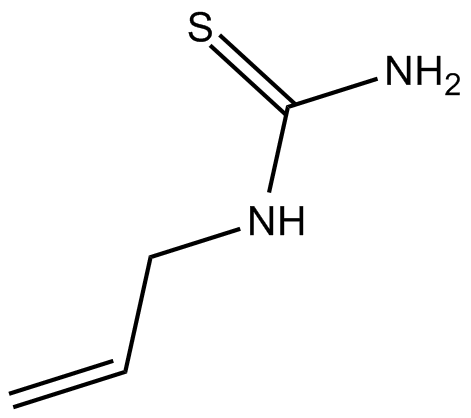
-
GP10015
alpha-1 antitrypsin fragment
Protease inhibitor
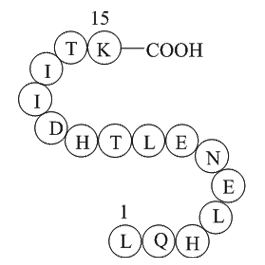
-
GP10008
alpha-1 antitrypsin fragment 235-243 [Homo sapiens]/[Papio hamadryas]/[Cercopithecus aethiops]
Protease inhibitor
![alpha-1 antitrypsin fragment 235-243 [Homo sapiens]/[Papio hamadryas]/[Cercopithecus aethiops] Chemical Structure alpha-1 antitrypsin fragment 235-243 [Homo sapiens]/[Papio hamadryas]/[Cercopithecus aethiops] Chemical Structure](/media/struct/GP1/GP10008.png)
-
GC35306
alpha-Mangostin
Alpha-Mangostin (α-Mangostin) ist ein diÄtetisches Xanthon mit breiten biologischen AktivitÄten, wie z. B. antioxidative, antiallergische, antivirale, antibakterielle, entzÜndungshemmende und krebshemmende Wirkungen. Es ist ein Inhibitor der mutierten IDH1 (IDH1-R132H) mit einem Ki von 2,85 μM.
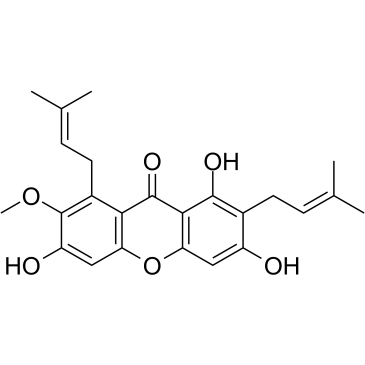
-
GC67968
ALPK1-IN-2
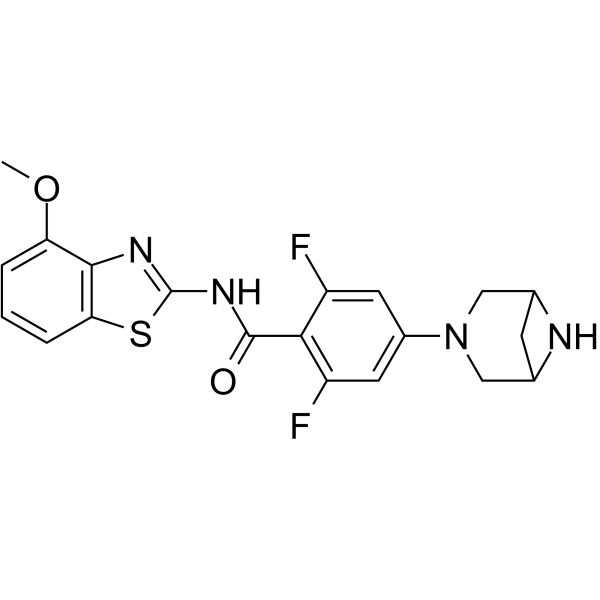
-
GC40024
Altenusin
Altenusin zeigt ausgeprÄgte DPPH-RadikalfÄngeraktivitÄten.

-
GC49039
Althiomycin
A thiazole antibiotic

-
GC46835
Alyssin
Alyssin, das in KreuzblÜtlern vorkommt, Übt eine AntikrebsaktivitÄt in HepG2 aus, indem es die intrazellulÄren reaktiven Sauerstoffspezies und die Depolymerisation von Tubulin erhÖht.

-
GC49638
Ambrisentan-d3
An internal standard for the quantification of ambrisentan

-
GC48611
Ambroxol-d5
An internal standard for the quantification of ambroxol

-
GC42780
Ambuic Acid
Ambuic acid is a cyclohexanone originally isolated from Pestalotiopsis and Monochaetia species that has phytopathogenic antifungal, quorum sensing inhibitory, and antibacterial activities.

-
GN10484
Amentoflavone
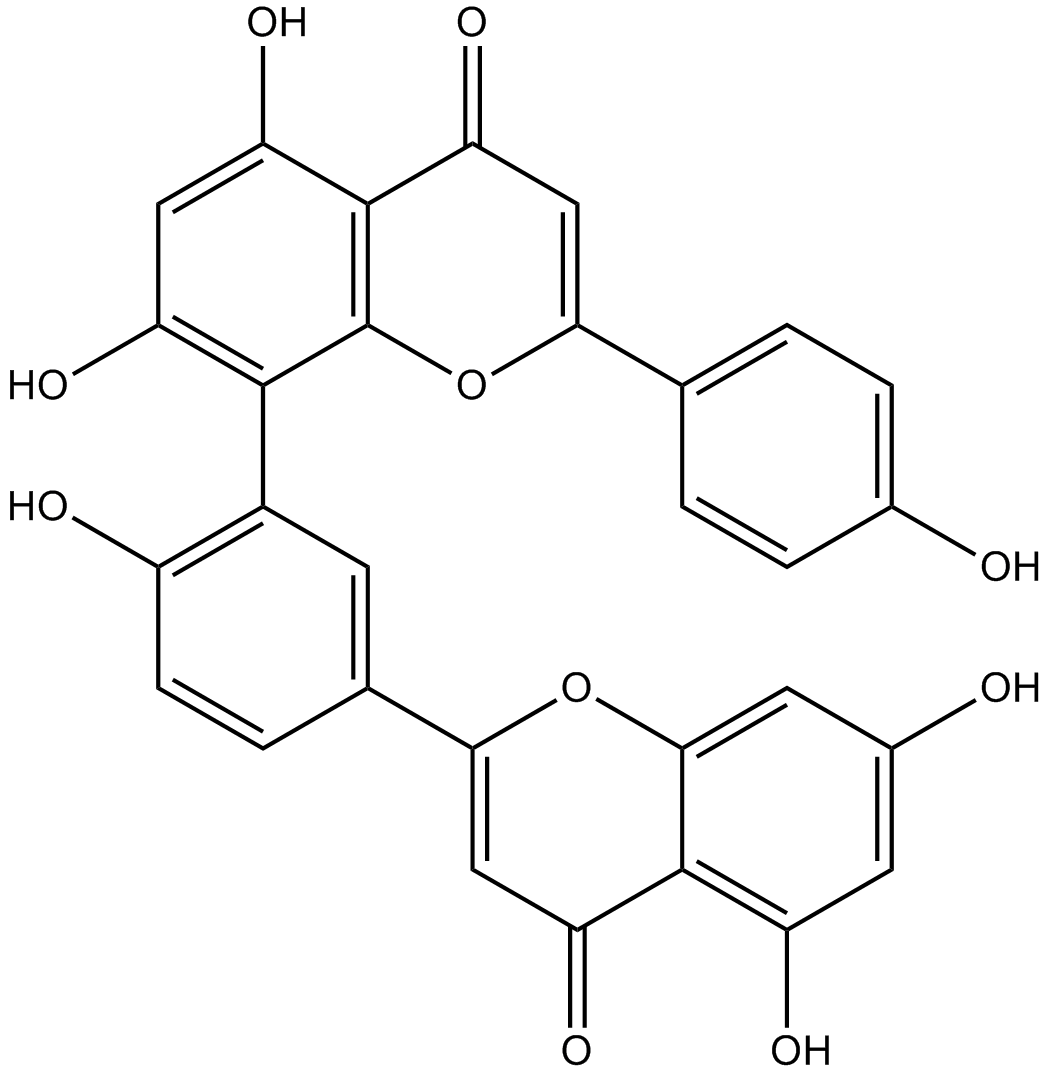
-
GC46840
Amicoumacin B
An amicoumacin with quorum-sensing inhibitory activity

-
GC15727
Aminoguanidine hydrochloride
Aminoguanidin-Hydrochlorid ist ein Diaminoxidase- und NO-Synthase-Hemmer, reduziert die Spiegel von Endprodukten der fortgeschrittenen Glykation (AGEs) durch Wechselwirkung mit 3-Desoxyglucoson und ist ein PrÜfprÄparat zur Behandlung von diabetischer Nephropathie.
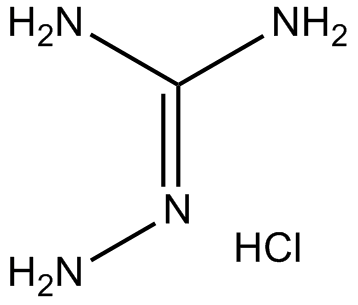
-
GC65226
Aminopicoline
Aminopicolin (Ascensil) ist ein potenter und nicht selektiver Inhibitor der Isoenzyme der NO-Synthase (NOS) (iNOS, nNOS, eNOS).
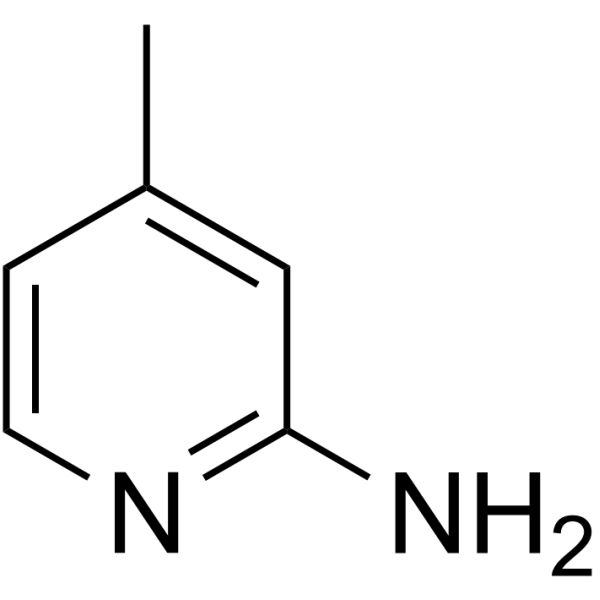
-
GC18274
Amiprofos-methyl
Amiprofos-methyl (BAY-NTN 6867) ist ein Phosphorsäureamid-Herbizid.
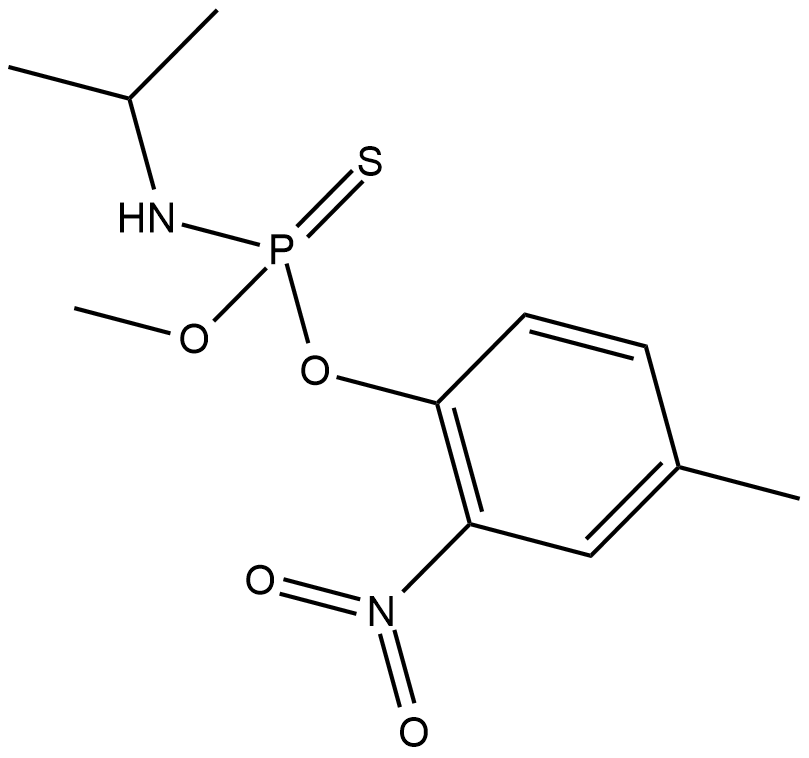
-
GC49336
AMK (hydrochloride)
An active metabolite of melatonin

-
GC31319
Amlexanox (AA673)
Amlexanox (AA673) (AA673; Amoxanox; CHX3673) ist ein spezifischer Inhibitor von IKKε und TBK1 und hemmt die IKKε und TBK1-AktivitÄt bestimmt durch MBP-Phosphorylierung mit einem IC50 von ungefÄhr 1-2 μM.
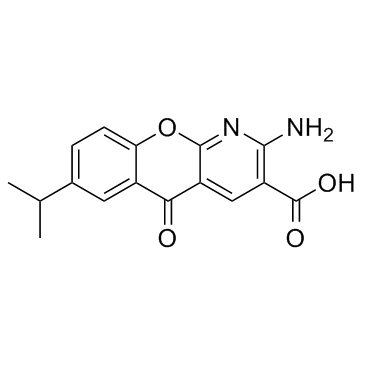
-
GC45725
Amodiaquine-d10
An internal standard for the quantification of amodiaquine

-
GC40636
Amorfrutin A
Amorfrutin A is an isoprenoid-substituted benzoic acid natural product found in the fruit of A.

-
GC52059
AMOZ
AMOZ, ein gewebegebundener Metabolit von Furaltadon, Furaltadon ist ein weit verbreitetes synthetisches Nitrofuran-Antibiotikum

-
GC41406
AMP-Deoxynojirimycin
The lipid messenger ceramide is converted to glucosylceramide by glucosylceramide synthase (GCS).
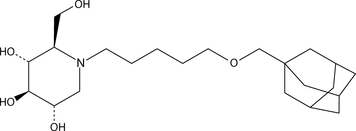
-
GC52406
AMPR-22 (trifluoroacetate salt)
An antimicrobial peptide

-
GC63932
Amsilarotene
Amsilarotene (TAC-101; Am 555S), ein oral aktives synthetisches Retinoid, hat eine selektive AffinitÄt zum RetinsÄurerezeptor α (RAR-α) Bindung mit Ki von 2,4, 400 nM fÜr RAR-α und RAR-β. Amsilaroten induziert die Apoptose menschlicher Magenkrebs-, hepatozellulÄrer Karzinom- und Ovarialkarzinomzellen. Amsilarotene kann fÜr die Krebsforschung verwendet werden.
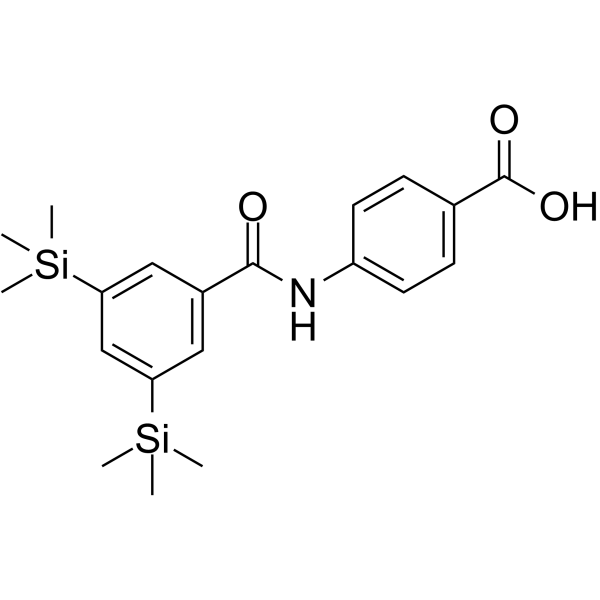
-
GC15010
AMT hydrochloride
AMT-Hydrochlorid ist ein selektiver Inhibitor von induzierbarer NOS (iNOS) mit einem Ki von 4,2 nM.
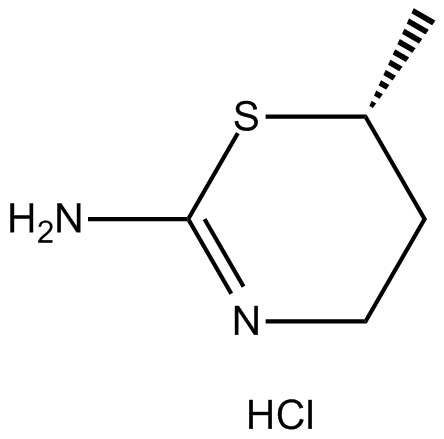
-
GC48339
Amycolatopsin A
A macrolide polyketide with antimycobacterial and anticancer activities

-
GC48350
Amycolatopsin C
A polyketide macrolide with antimycobacterial and anticancer activities

-
GP10099
amyloid A protein fragment [Homo sapiens]
Apolipoproteins related to HDL in plasma
![amyloid A protein fragment [Homo sapiens] Chemical Structure amyloid A protein fragment [Homo sapiens] Chemical Structure](/media/struct/GP1/GP10099.png)
-
GC32057
AN-3485
AN-3485 ist ein Benzoxaborol-Analogon, Toll-Like Receptor (TLR)-Inhibitor mit IC50-Werten im Bereich von 18 bis 580 nM.
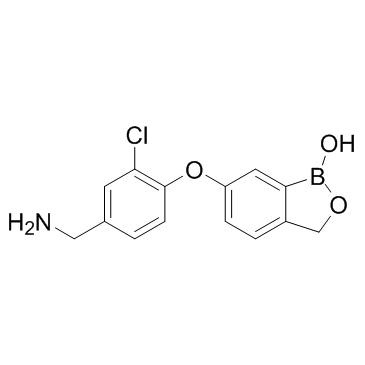
-
GC41211
Anacardic Acid Diene
Anacardic acid diene is a polyunsaturated form of anacardic acid that has been found in cashew nut shell liquid.

-
GC41531
Anacardic Acid Triene
Anacardic acid triene is a polyunsaturated form of anacardic acid that has been found in cashew nut shell liquid.

-
GC39254
Anatabine dicitrate
Anatabindicitrat ist ein Tabakalkaloid, das die Blut-Hirn-Schranke passieren kann.
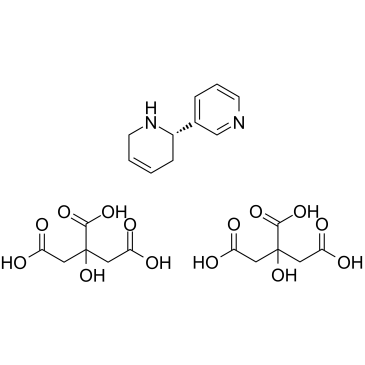
-
GN10718
Andrographolide
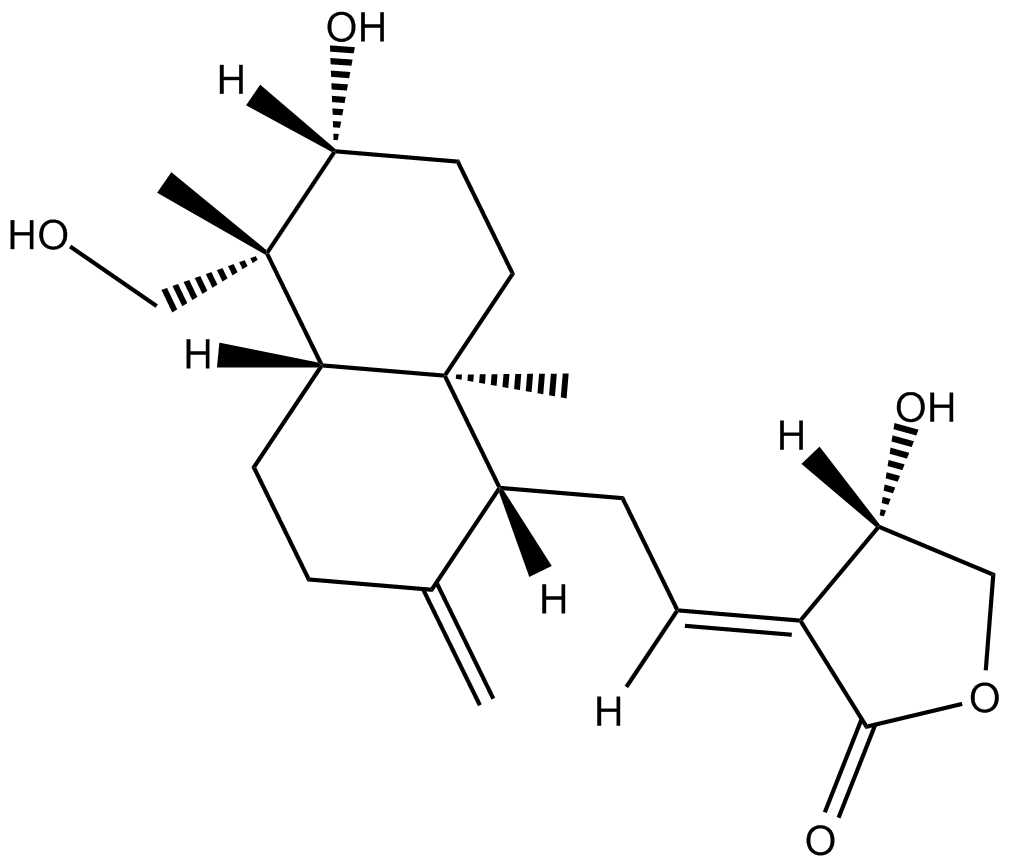
-
GC35340
Andropanolide
Andrographolid (Andro) ist ein kleiner Antagonist fÜr die NF-κB-Aktivierung durch kovalente Modifikation des reduzierten Cysteins 62 von p50.
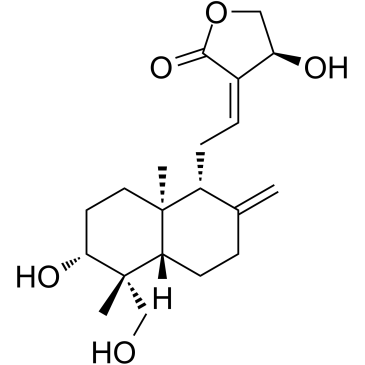
-
GN10685
Anemarsaponin B
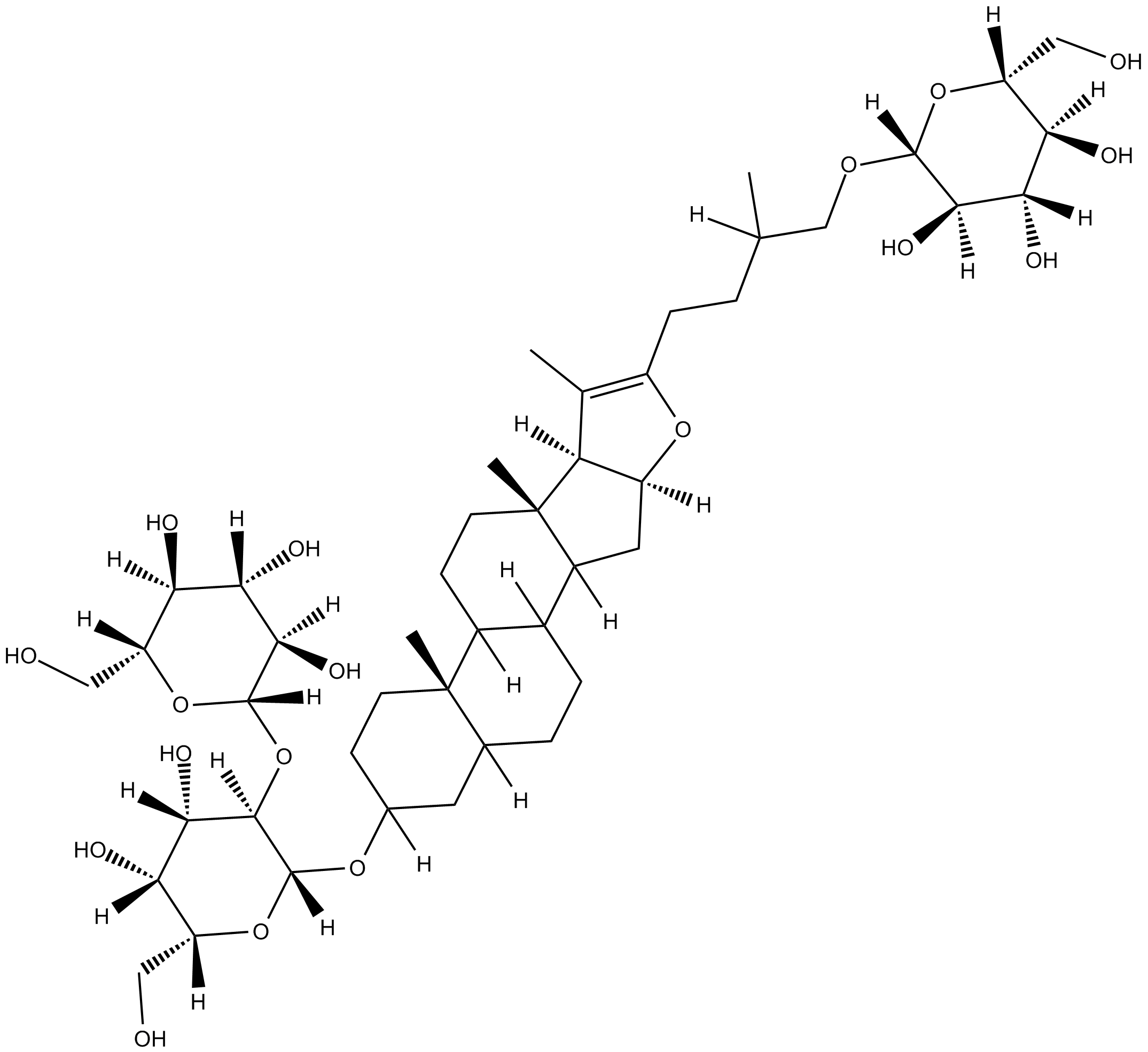
-
GC19428
Angeli’s Salt
Ein klassischer Nitroxyl (NO-) Spender
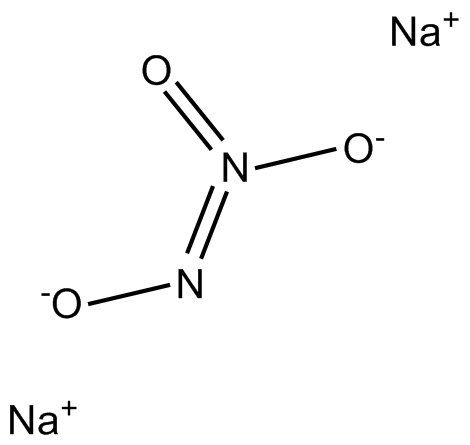
-
GC39284
ANI-7
ANI-7 ist ein Aktivator des Aryl-Kohlenwasserstoff-Rezeptor (AhR)-Signalwegs. ANI-7 hemmt das Wachstum mehrerer Krebszellen und hemmt wirksam und selektiv das Wachstum von MCF-7-Brustkrebszellen mit einem GI50 von 0,56 μM. ANI-7 induziert CYP1-metabolisierende Monooxygenasen durch Aktivierung des AhR-Signalwegs und induziert auch DNA-SchÄden, Aktivierung der Checkpoint-Kinase 2 (Chk2), Stillstand des S-Phasen-Zellzyklus und Zelltod in empfindlichen Brustkrebs-Zelllinien.
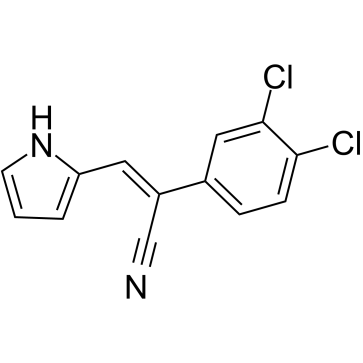
-
GC49419
Aniline-d5
An internal standard for the quantification of aniline

-
GC42815
Ansatrienin A
Ansatrienin A is an ansamycin antibiotic and antifungal agent first isolated from S.

-
GC49259
Antagonist G (trifluoroacetate salt)
A neuropeptide antagonist

-
GP10124
Anti-Inflammatory Peptide 1
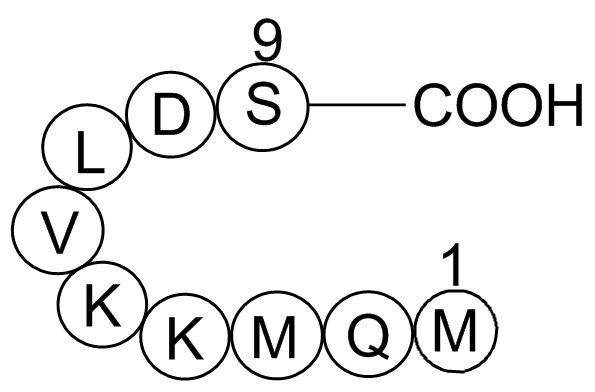
-
GC45383
Antibiotic PF 1052
Das Antibiotikum PF 1052 ist ein aus einer Naturproduktbibliothek extrahiertes Antibiotikum.

-
GC49360
Antimycin A Complex
Ein bakterielles Stoffwechselprodukt-Komplex

-
GC52128
AOD-9604

-
GC52380
AOD-9604 (acetate)
A synthetic lipolytic peptide

-
GC34172
AP1867
AP1867 ist ein synthetischer FKBP12F36V-gerichteter Ligand.
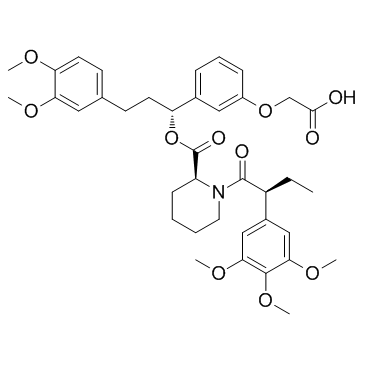
-
GC15586
AP1903
AP1903 (AP1903) ist ein Dimerisierungsmittel, das durch Quervernetzung der FKBP-DomÄnen wirkt. AP1903 (AP1903) dimerisiert den Caspase 9 Selbstmordschalter und induziert schnell Apoptose.
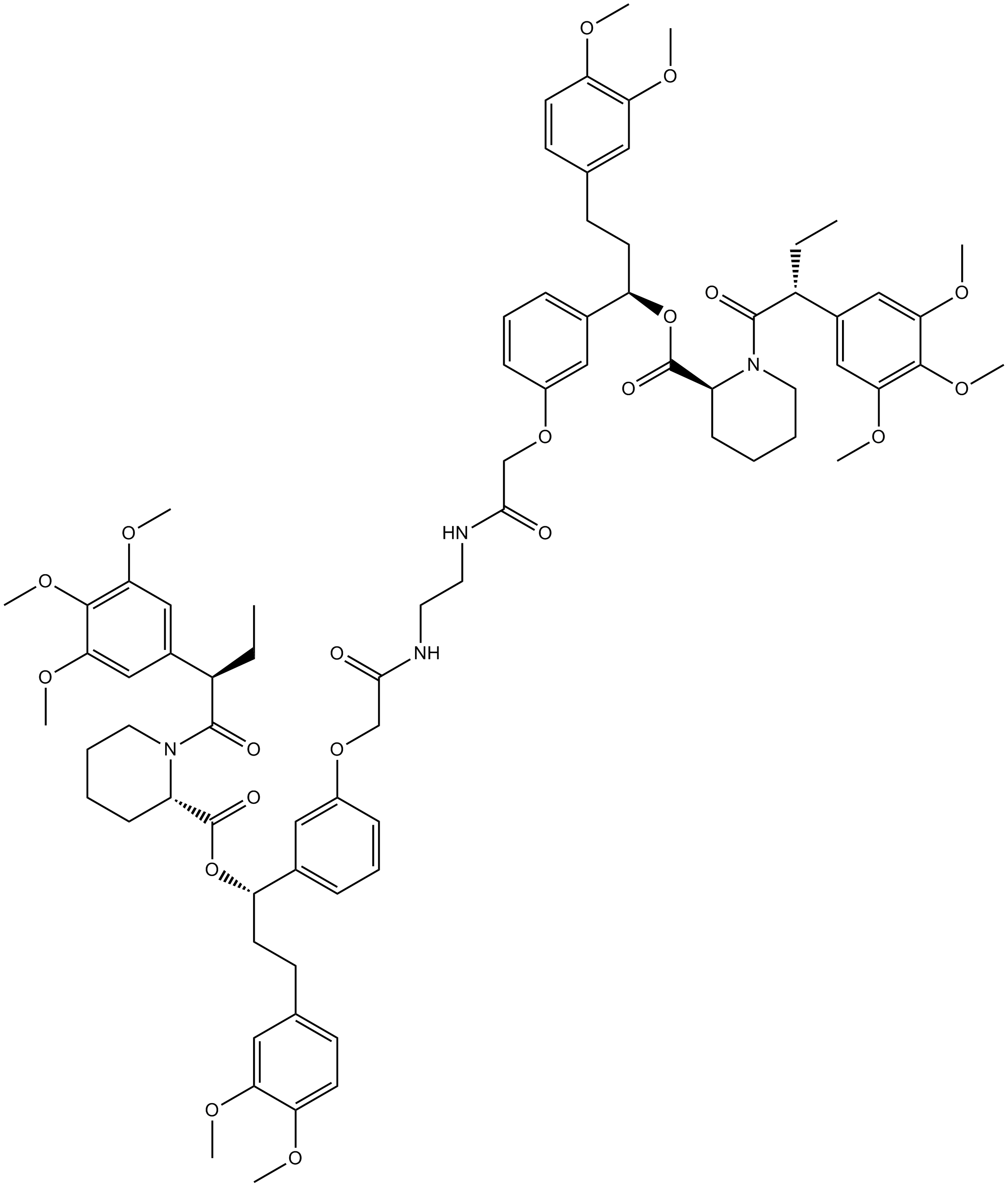
-
GC14498
AP20187
AP20187 (B/B Homodimerizer) ist ein zelldurchlÄssiger Ligand, der zur Dimerisierung von FK506-Bindungsprotein (FKBP)-Fusionsproteinen und zur Initiierung biologischer Signalkaskaden und Genexpression oder zur Unterbrechung von Protein-Protein-Wechselwirkungen verwendet wird.
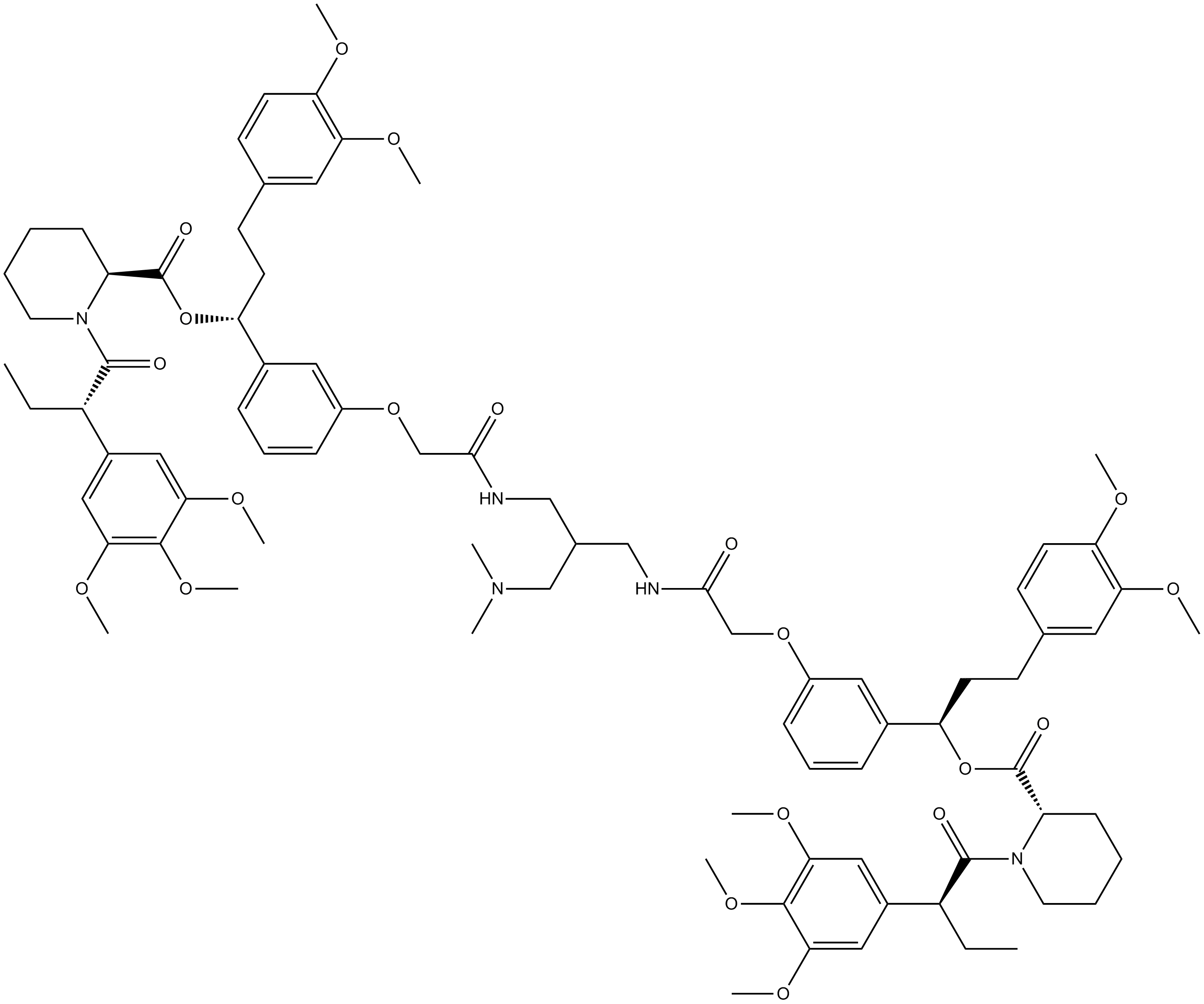
-
GC42821
AP219
AP39 is a compound used to increase the levels of hydrogen sulfide (H2S) within mitochondria.

-
GC42823
AP39
AP39 ist ein Triphenylphosphonium-derivatisiertes Anetholdithiolethion und ein mitochondrien-gerichteter Schwefelwasserstoff (H2S)-Donor.

-
GC52427
Apelin-12 (human, mouse, rat, bovine) (acetate)
An endogenous agonist of the APJ receptor

-
GC42825
APF
APF ist eine Fluoreszenzsonde, die selektiv und dosisabhÄngig bestimmte Spezies unter den ROS nachweisen kann, die hochgradig resistent gegen Autoxidation sind.

-
GN10509
Apigenin-7-O-β-D-glucopyranoside
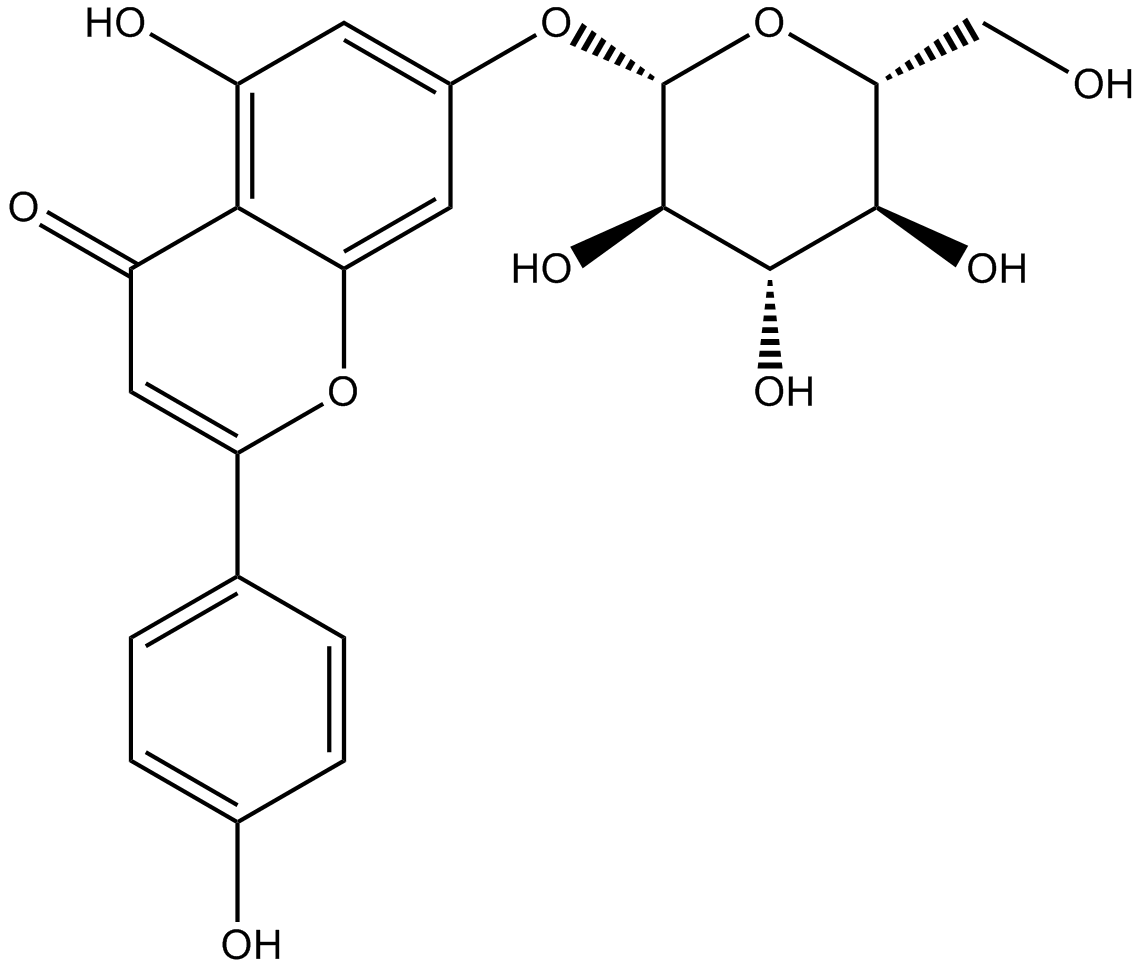
-
GC46862
Apigenin-d5
An internal standard for the quantification of apigenin

-
GC42826
Apigeninidin (chloride)
Apigeninidin (Gesneridin) Chlorid, ein 3‐Desoxyanthocyanidin, ist ein Pilzwachstumshemmer.

-
GC35373
Apilimod
Apilimod (STA 5326) ist ein potenter IL-12/IL-23-Inhibitor und hemmt IL-12 stark mit IC50-Werten von 1 nM und 2 nM in IFN-γ/SAC-stimulierten humanen PBMCs bzw. SAC-behandelten Affen-PBMCs .
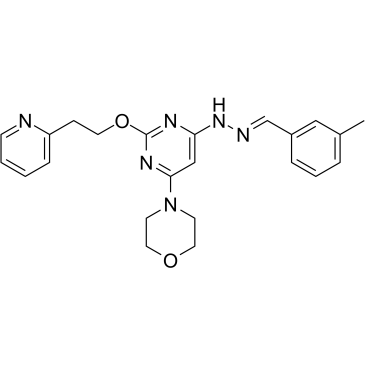
-
GC35374
Apilimod mesylate
Apilimod (STA 5326)-Mesylat ist ein potenter IL-12/IL-23-Inhibitor und hemmt IL-12 stark mit IC50-Werten von 1 nM und 2 nM in IFN-γ/SAC-stimulierten menschlichen PBMCs und SAC-behandelten Affen-PBMCs, bzw..
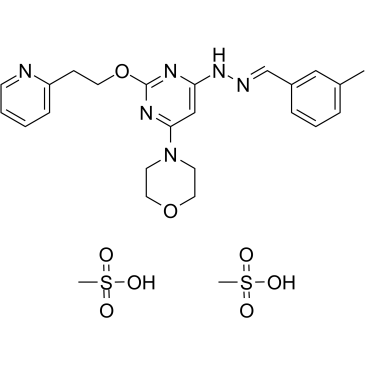
-
GC65004
Apostatin-1
Apostatin-1 (Apt-1) ist ein potenter TRADD-Hemmer.
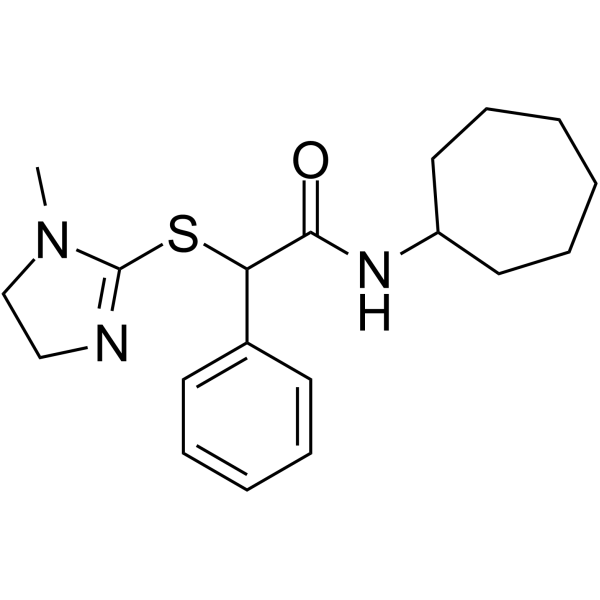
-
GC48988
Apramycin (sulfate hydrate)
An aminoglyco
side antibiotic 
-
GC46867
Apremilast-d5
Apremilast D5 (CC-10004 D5) ist ein Deuterium mit der Bezeichnung Apremilast.

-
GC49776
Apricitabine
Apricitabin (SPD754; AVX754), das (-)-Enantiomer von 2′-Desoxy-3′-oxa-4′-thiocytidin (dOTC), ist ein hochselektiver und oral aktiver HIV-1-Reverse-Transkriptase (RT)-Hemmer (Ki= 0,08 μM) und hemmt die DNA-Polymerasen α, β und γ mit einem Ki-Wert von 300 μM, 12 μM bzw. 112,25 μM.

-
GC31661
APY0201
APY0201 ist ein potenter PIKfyve-Inhibitor, der die Umwandlung von PtdIns3P zu PtdIns(3,5)P2 in Gegenwart von [33P]ATP mit einem IC50 von 5,2 nM hemmt.
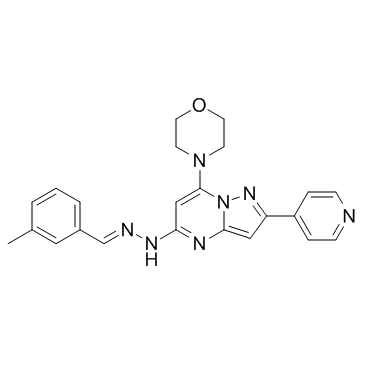
-
GC48393
Aquastatin A
Aquastatin A ist ein Inhibitor der SÄugetier-Adenosintriphosphatase.

-
GC14231
AR-C 102222
iNOS inhibitor
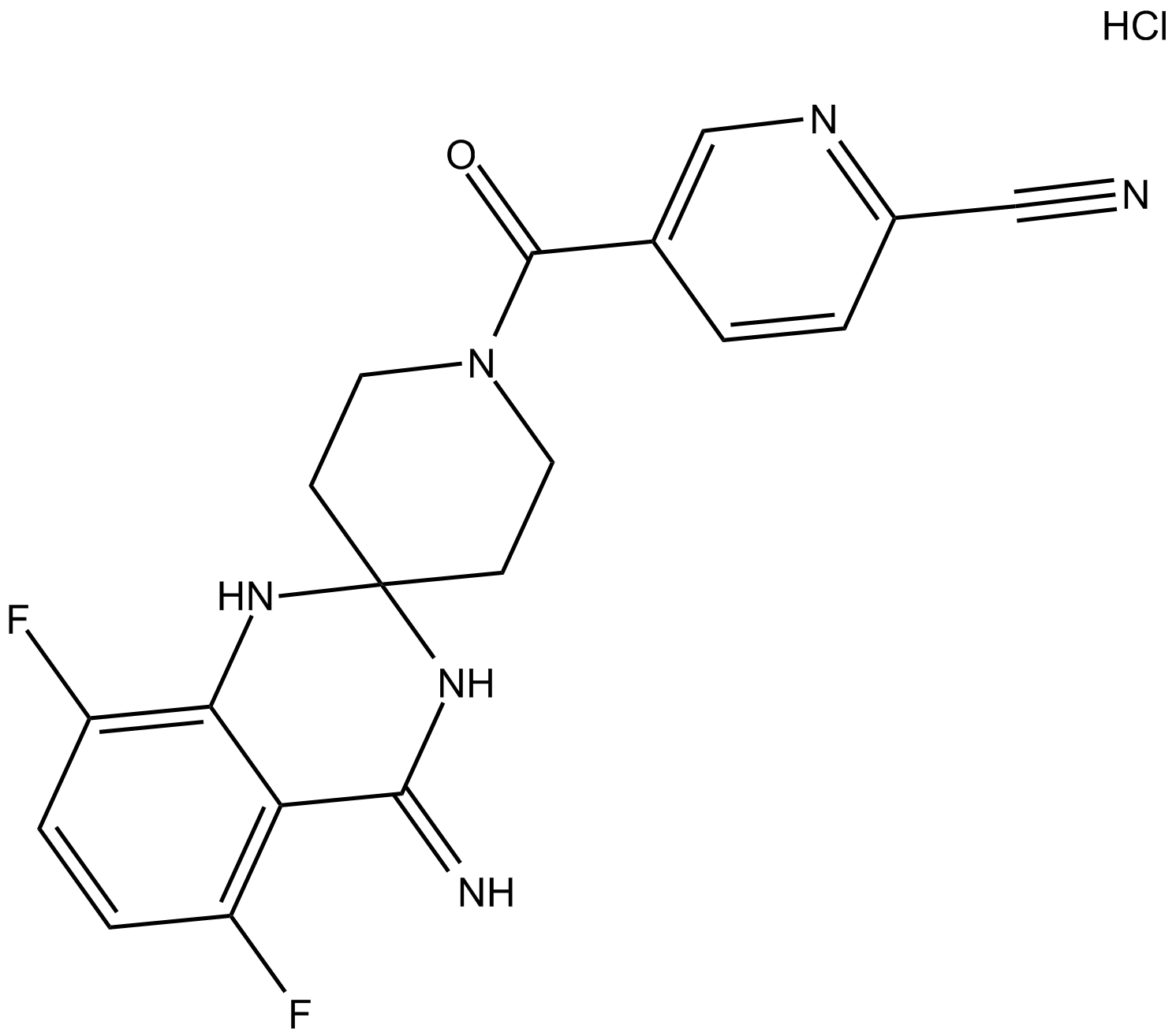
-
GC38735
AR-C102222 hydrochloride
AR-C102222-Hydrochlorid ist ein potenter, kompetitiver, oral aktiver und hochselektiver Inhibitor der induzierbaren Stickoxidsynthase (iNOS) mit einem IC50-Wert von 37 nM.
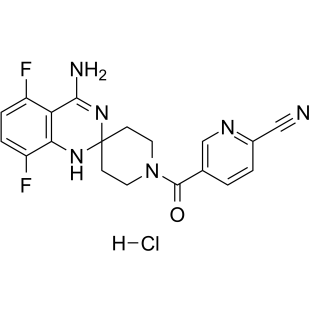
-
GC42832
Arachidic Acid (sodium salt)
Arachidic acid is a long-chain saturated fatty acid that has been found in peanut butter and anaerobic fungi.

-
GC45384
Arachidic Acid-d2

-
GC46869
Arachidic Acid-d3
ArachinsÄure-d3 (IcosansÄure-d3) ist die mit Deuterium bezeichnete ArachinsÄure.

-
GC42837
Arachidonic Acid-biotin
Virtually all cellular arachidonic acid is esterified in membrane phospholipids where its presence is tightly regulated through multiple interconnected pathways.

-
GC52514
Arachidonic Acid-d11 ethyl ester
An internal standard for the quantification of arachidonic acid ethyl ester

-
GC46872
Arachidonic Acid-d5
An internal standard for the quantification of arachidonic acid

-
GC46878
Aranciamycin
A fungal metabolite with diverse biological activities

-
GC48472
Aranciamycin A
An antibiotic

-
GC40116
Aranorosin
Aranorosin, ein wirksames antimykotisches Antibiotikum, wurde aus dem Kulturfiltrat und dem Myzel eines Stammes von Pseudoarachniotus roseus Kuehn isoliert.

-
GC69582
ARC186
ARC 186 is a nucleic acid adapter that is an efficient complement inhibitor and works by blocking the activation of C5 catalyzed by convertase.

-
GC65163
Ardisiacrispin B
Ardisiacrispin B zeigt zytotoxische Wirkungen in multifaktoriell medikamentenresistenten Krebszellen Über ferroptotischen und apoptotischen Zelltod.
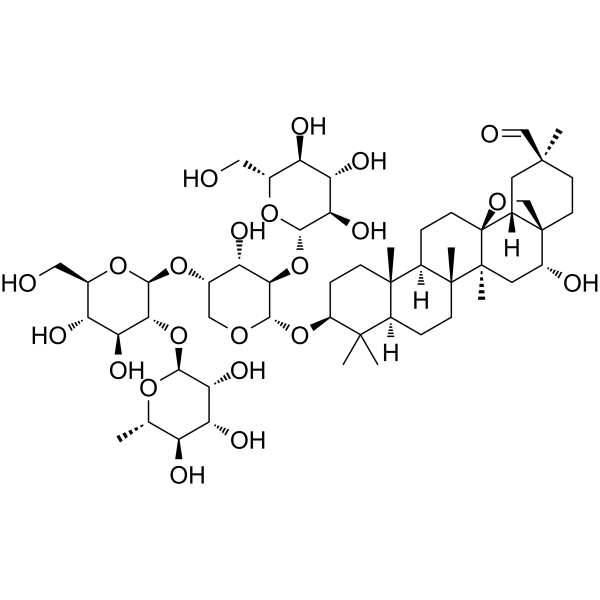
-
GC35385
Arglabin
Arglabin ((+)-Arglabin), ein aus Artemisia glabella isoliertes Naturprodukt, ist ein NLRP3-Inflammasom-Inhibitor.
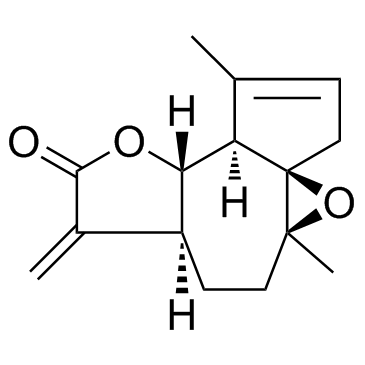
-
GC52332
Arimoclomol
A co-inducer of heat shock proteins

-
GN10579
Aristolochic Acid A
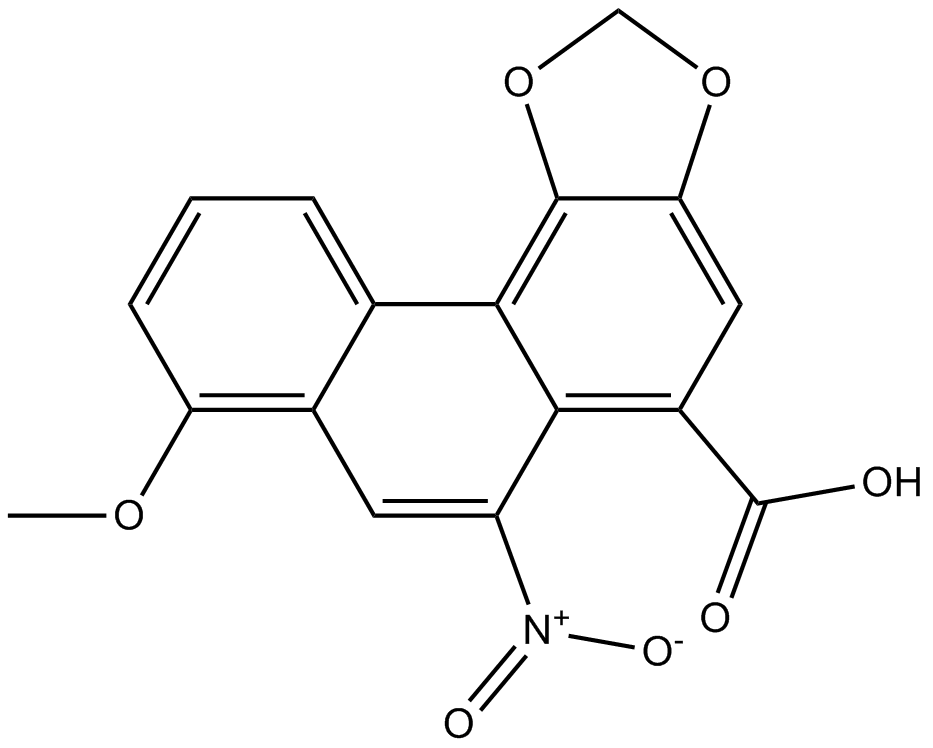
-
GC46005
Arjunolic Acid
ArjunolsÄure ist ein aus Symplocos lancifolia isoliertes Saponin und hat verschiedene biologische AktivitÄten, einschließlich antioxidativer, antimikrobieller, antibakterieller und entzÜndungshemmender AktivitÄten.

-
GC14802
ARL 17477 dihydrochloride
Selective nNOS inhibitor
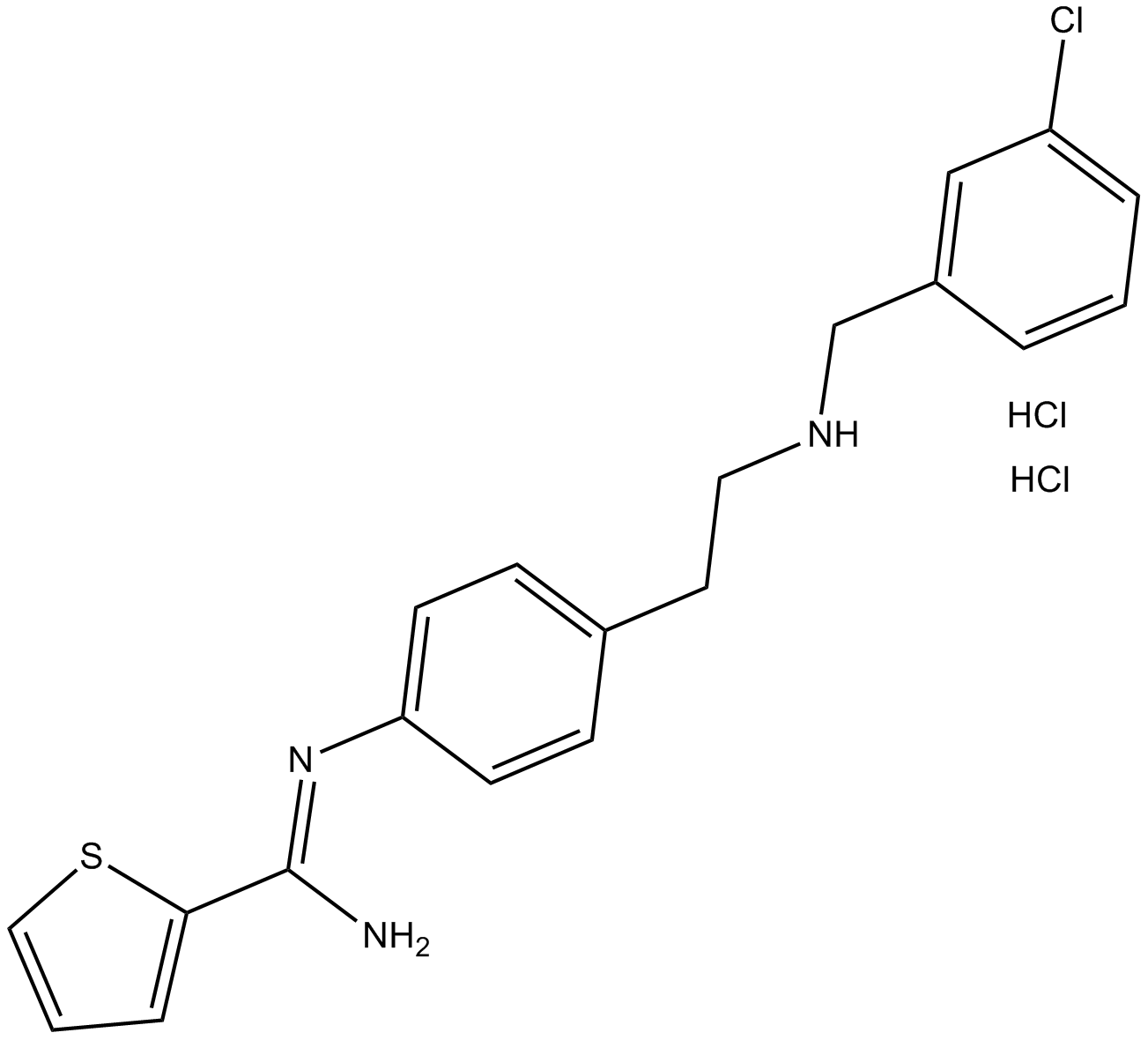
-
GC35394
Armepavine
Armepavine, ein Wirkstoff aus Nelumbo nucifera, Übt nicht nur entzÜndungshemmende Wirkungen auf menschliche periphere mononukleÄre Blutzellen aus, sondern auch immunsuppressive Wirkungen auf T-Lymphozyten und auf Lupus-nephritische MÄuse.
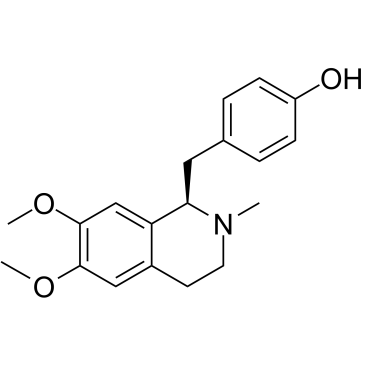
-
GC61796
Armillarisin A
Armillarisin A hat das Potenzial fÜr die Colitis ulcerosa (UC)-Studie.
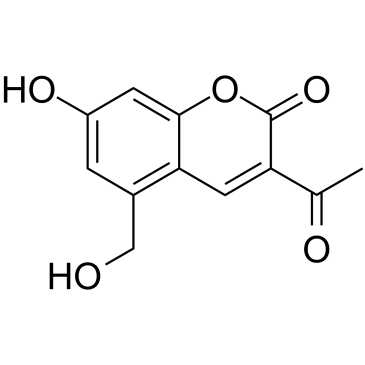
-
GC33070
ARN-3236
ARN-3236 ist ein oral aktiver und selektiver Inhibitor der salzinduzierbaren Kinase 2 (SIK2) mit IC50-Werten von <1 nM, 21,63 nM und 6,63 nM fÜr SIK2, SIK1 bzw. SIK3.
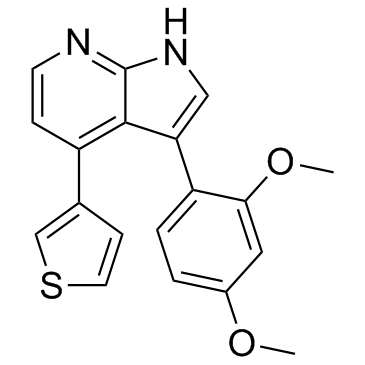
-
GC49103
Aromadendrene
A sesquiterpene with diverse biological activities

-
GC46881
Artemether-d3
An internal standard for the quantification of artemether

-
GC46882
Artemisinin-d3
An internal standard for the quantification of artemisinin

-
GC45790
Artesunate-d4
Artesunat-d4 ist Deuterium mit der Bezeichnung Artesunat. Artesunat ist ein Inhibitor sowohl von STAT-3 als auch von exportiertem Protein 1 (EXP1).

-
GC17659
AS 101
AS 101 (AS101), eine immunmodulatorische Tellurverbindung, ist ein starkes IL-1β Inhibitor.
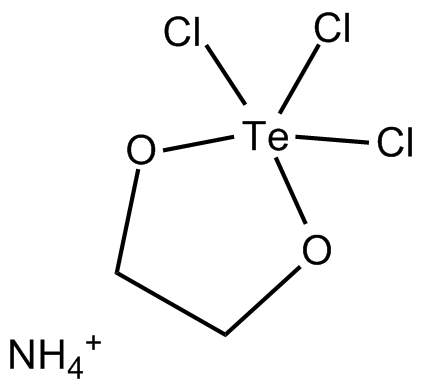
-
GC46883
AS-2077715
An inhibitor of fungal complex III

-
GC35401
Asatone
Asatone ist eine aus Radix et Rhizoma Asari isolierte aktive Komponente mit entzÜndungshemmender Wirkung durch Aktivierung von NF-κB und Downregulation von p-MAPK (ERK, JNK und p38) Signalwegen.
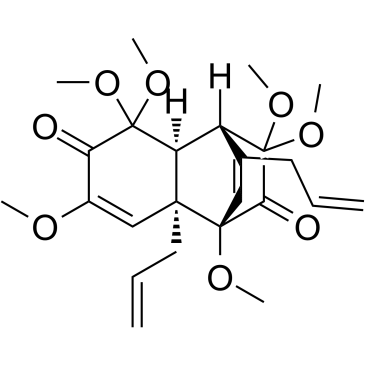
-
GC12070
Ascorbic acid
Ein Elektronendonator
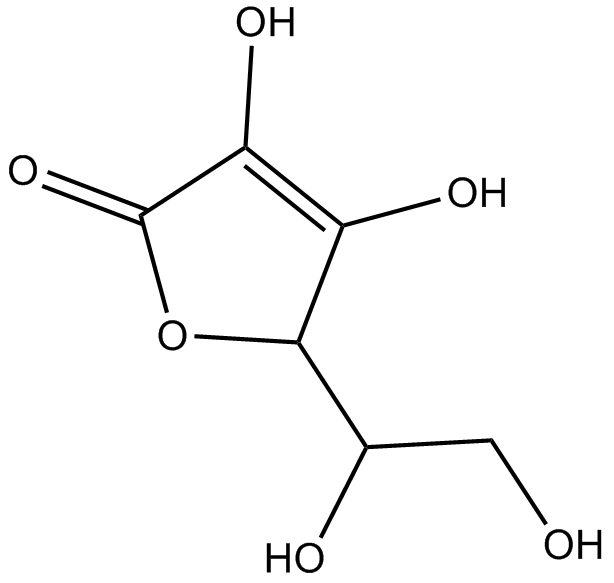
-
GN10534
Asiaticoside
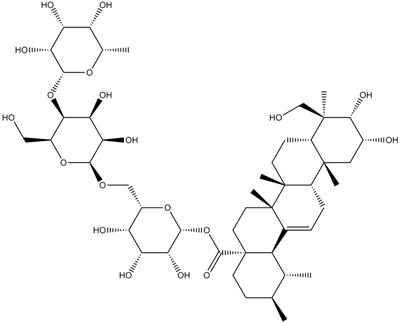
-
GC18978
Aspartocin D
Aspartocin D is a lipopeptide antibiotic originally isolated from S.
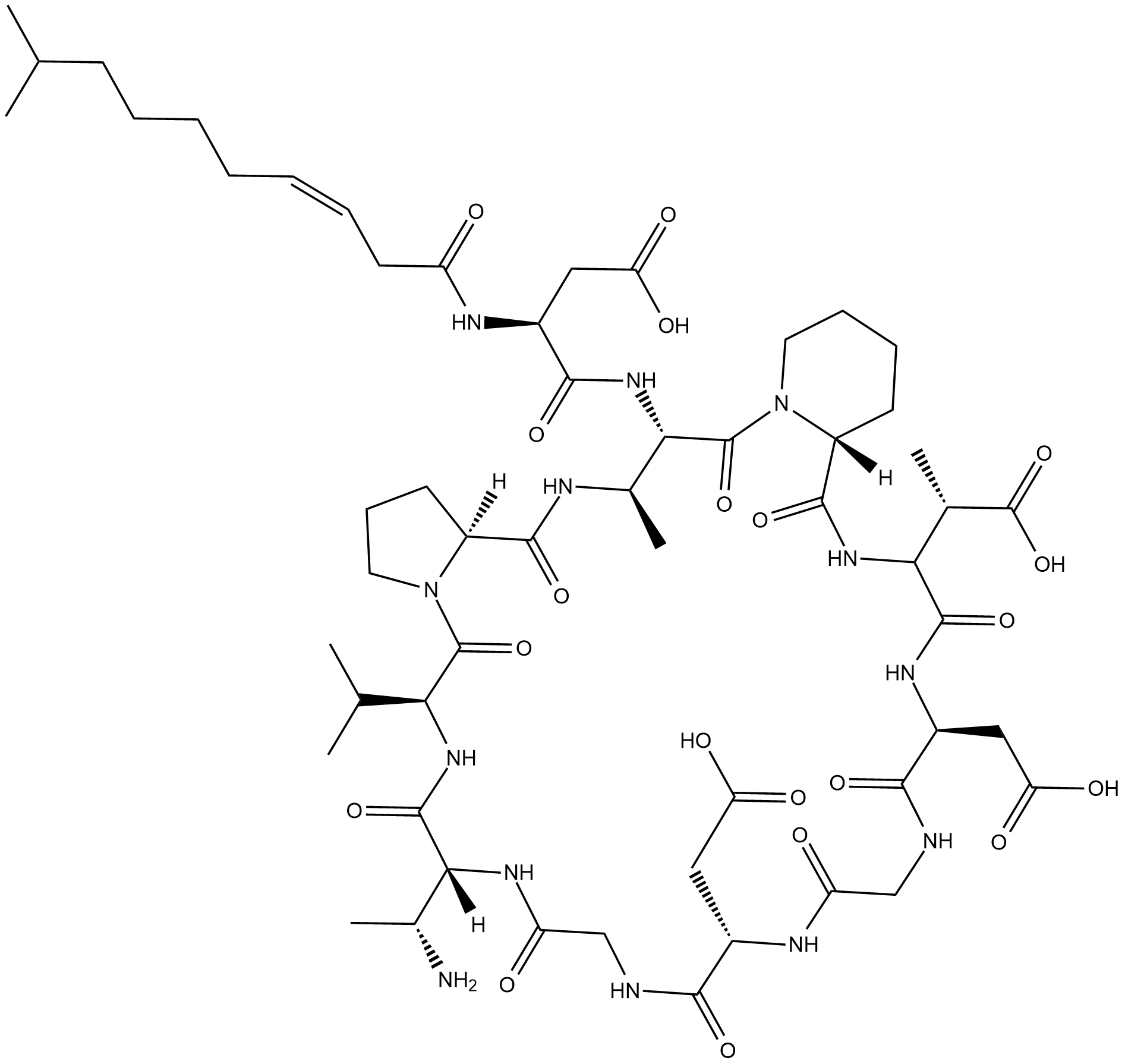
-
GC46089
Asperfuran
Asperfuran ist ein antimykotisches Dihydrobenzofuran-Derivat, das von einem Stamm von Aspergillus oryzae produziert wird.

-
GC42858
Aspergillin PZ
Aspergillin PZ ist ein neuartiges Isoindol-Alkaloid aus Aspergillus awamori.

-
GC40682
Asperlactone
Asperlactone is a nematicidal, insecticidal, antibacterial, and antifungal polyketide metabolite produced from A.

-
GC35411
Asperuloside
Asperulosid ist ein aus Hedyotis diffusa isoliertes Iridoid mit entzÜndungshemmender Wirkung.
